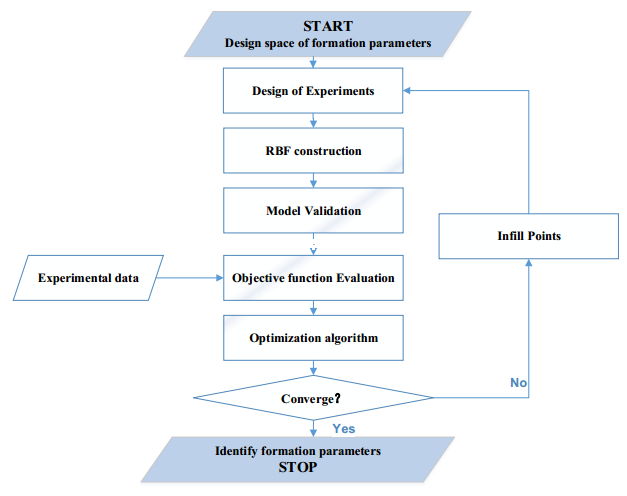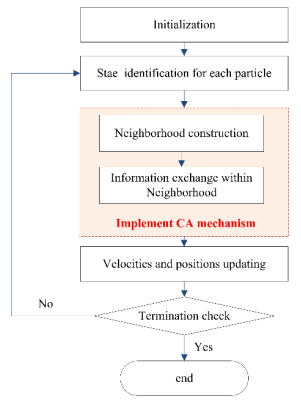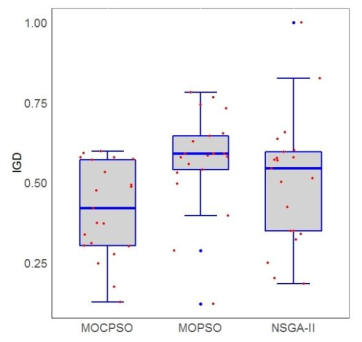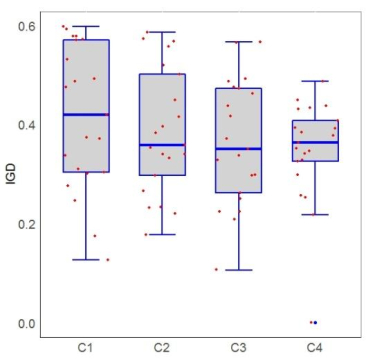|
[1]
|
J. W. Graham and N. L. Muench, Analytical determination of optimum bit weight and rotary speed combinations, in Fall Meeting of the Society of Petroleum Engineers of AIME, Society of Petroleum Engineers: Dallas, Texas, (1959), 35.
|
|
[2]
|
A. T. Bourgoyne Jr and F. S. Young Jr., A multiple regression approach to optimal drilling and abnormal pressure detection, Soc. Pet. Eng. J., 14 (1974), 371–384.
|
|
[3]
|
M. R. Reza and C. F. Alcocer, A unique computer simulation model well drilling: Part I-the reza drilling model, in SPE California regional meeting, Society of Petroleum Engineers: Oakland, California. (1986), 10.
|
|
[4]
|
F. Iqbal, Drilling optimization technique-using real time parameters, in SPE russian oil and gas technical conference and exhibition, Society of Petroleum Engineers: Moscow, Russia, (2008), 6.
|
|
[5]
|
Q. B. Amjad, S. Waheed and M. S. K. Jadoon, et al., Drilling optimization of kohat/potohar region by mathematical model (using matlab) and comparative method-A case study, in SPE/PAPG pakistan section annual technical conference, Society of Petroleum Engineers: Islamabad, Pakistan, (2015), 12.
|
|
[6]
|
T. Eren, M. E. Ozbayoglu, Real time optimization of drilling parameters during drilling operations, in SPE oil and gas india conference and exhibition, Society of Petroleum Engineers: Mumbai, India, (2010), 14.
|
|
[7]
|
L. Zhang, D. Teng and Q. Shen, Parameter optimization of drilling based on biogeography-based optimization, in 2018 2nd International Symposium on Resource Exploration and Environmental Science, REES 2018, April 28, 2018–April 29, 2018. Ordos, China: Institute of Physics Publishing 2018.
|
|
[8]
|
Y. X. Sun, L. H. Qiao and H. F. Sun, et al., Real-time Surveillance System of Mechanical Specific Energy Applied in Drilling Parameters Optimization, in Proceedings of the 2nd Annual International Conference on Advanced Material Engineering (eds. A. K. Bhatnagar, R. Dahai, K. M. Pandey, H. Haeri, R. A. Andrievskiy, M. Ziara, G. Feng), (2016), 771–777.
|
|
[9]
|
Y. Zhai, Z. Wang and Q. Zhang, et al., The study of deepwater drilling parameters optimization. in 2012 International Conference on Applied Mechanics and Materials, ICAMM 2012, November 24, 2012–November 25, 2012. Sanya, China: Trans Tech Publications 2013.
|
|
[10]
|
M. Cui, J. Li and G. Ji, et al., Optimize method of drilling parameter of compound drilling based on mechanical specific energy theory, Pet. Drill. Tech., 42 (2014), 66–70.
|
|
[11]
|
A. Rey, R. Zmeureanu,Micro-time variant multi-objective particle swarm optimization (micro-TVMOPSO) of a solar thermal combisystem, Swarm. Evolut. Compu., 36 (2017), 76–90.
|
|
[12]
|
L. Vanneschi, R. Henriques and M. Castelli, Multi-objective genetic algorithm with variable neighbourhood search for the electoral redistricting problem, Swarm. Evolut. Comput., 36 (2017), 37–51.
|
|
[13]
|
F. Florence and F. P. Iversen, Real-time models for drilling process automation: equations and applications, in IADC/SPE drilling conference and exhibition, Society of Petroleum Engineers: New Orleans, Louisiana, USA, (2010), 16.
|
|
[14]
|
X. Chen, D. Gao and B. Guo, et al., Real-time optimization of drilling parameters based on mechanical specific energy for rotating drilling with positive displacement motor in the hard formation, J. Nat. Gas. Sci. Eng., 35 (2016), 686–694.
|
|
[15]
|
K. Mohan, F. Adil and R. Samuel, Comprehensive hydromechanical specific energy calculation for drilling efficiency, J. Energ. Resour-Asme., 137 (2015), 8.
|
|
[16]
|
A. Beck and M. Teboulle, A fast iterative shrinkage-thresholding algorithm for linear inverse problems, Siam. J. Imaging. Sci., 2 (2009), 183–202.
|
|
[17]
|
C. L. Wu and K. W. Chau, Rainfall-runoff modeling using artificial neural network coupled with singular spectrum analysis, J. Hydrol., 399 (2011), 394–409.
|
|
[18]
|
P. Hajikhodaverdikhana, M. Nazari and M. Mohsenizadeh, et al., Earthquake prediction with meteorological data by particle filter-based support vector regression, Eng. Appl. Comput. Fluid. Mech., 12 (2018), 679–688.
|
|
[19]
|
S. F. Ardabili, B. Najafi and S. Shamshirband, et al., Computational intelligence approach for modeling hydrogen production: A review, Eng. Appl. Comput. Fluid. Mech., 12 (2018), 438–458.
|
|
[20]
|
R. Moazenzadeh, B. Mohammadi and S. Shahaboddin, et al., Coupling a firefly algorithm with support vector regression to predict evaporation in northern Iran, Eng. Appl. Comput. Fluid. Mech., 12 (2018), 584–597.
|
|
[21]
|
R. C. Bose and K. A. Bush, Orthogonal arrays of strength two and three, Ann. Math. Stat., 23 (1952), 508–524.
|
|
[22]
|
J. Stufken and B. Tang, Complete Enumeration of Two-Level Orthogonal Arrays of Strength d With d+2 Constraints, Ann. Stat., 35 (2007), 793–814.
|
|
[23]
|
J. Zheng, An output mapping variable fidelity metamodeling approach based on nested Latin hypercube design for complex engineering design optimization, Appl. Intell., 48 (2018), 3591–3611.
|
|
[24]
|
Y. M. Yu, D-optimal designs via a cocktail algorithm, Stat. Comput., 21 (2011), 475–481.
|
|
[25]
|
K. T. Fang and D. K. J. Lin, Uniform design in computer and physical experiments, Grammar. Technol. Dev., (2008), 105–125.
|
|
[26]
|
Q. Zhou, Y. Rong and X. Shao, et al., Optimization of laser brazing onto galvanized steel based on ensemble of metamodels, J. Intell. Manuf., 29 (2018), 1417–1431.
|
|
[27]
|
B. Najafi, S. F. Ardabili and S. Shamshirband, et al., ANFIS and RSM to estimating and optimizing the parameters that affect the yield and cost of biodiesel production, Eng. Appl. Comput. Fluid. Mech., 12 (2018), 611–624.
|
|
[28]
|
N. Queipo, R. Haftka and W. Shyy, et al., Surrogate-based analysis and optimization, Prog. Aerosp. Sci., 41 (2005), 1–28.
|
|
[29]
|
M. Gardner, On Cellular Automata, Self-Reproduction, the Garden of Eden and the Game "Life", Sci. Am., 224 (1971), 112–117.
|
|
[30]
|
M. E. Larraga and L. Alvarez-Icaza, Towards a realistic description of traffic flow based on cellular automata, in 14th IEEE International Intelligent Transportation Systems Conference, ITSC 2011, October 5, 2011–October 7, 2011. Washington, DC, United states: Institute of Electrical and Electronics Engineers Inc. 2011.
|
|
[31]
|
Y. J. Luo, B. Jia and X. G. Li, et al., A realistic cellular automata model of bus route system based on open boundary, Trans. Res. C-Emer., 25 (2012), 202–213.
|
|
[32]
|
M. A. J. Javid, W. Alghamdi and A. Ursyn, et al., Swarmic approach for symmetry detection of cellular automata behaviour, Soft. Comput., 21 (2017), 5585–5599.
|
|
[33]
|
J. Zheng, X. Y. Shao and L. Gao, et al., A prior-knowledge input LSSVR metamodeling method with tuning based on cellular particle swarm optimization for engineering design, Expert. Syst. Appl., 41 (2014), 2111–2125.
|
|
[34]
|
B. Placzek, A cellular automata approach for simulation-based evolutionary optimization of self-organizing traffic signal control, J. Cell. Autom., 11 (2016), 475–496.
|
|
[35]
|
B. K. Mathew, S. K. John and C. Pradeep, New technique for fault detection in quantum cellular automata, in 1st International Conference on Emerging Trends in Engineering and Technology, ICETET 2008, July 16, 2008–July 18, 2008. Nagpur, Maharashtra, India: IEEE Computer Society 2008.
|
|
[36]
|
L. Gao, J. D. Huang and X. Y. Li, An effective cellular particle swarm optimization for parameters optimization of a multi-pass milling process, Appl. Soft. Comput., 12 (2012), 3490–3499.
|
|
[37]
|
Y. Shi, H. C. Liu and L. Gao, et al., Cellular particle swarm optimization, Inform. Sci., 181 (2011), 4460–4493.
|
|
[38]
|
C. Lu, L. Gao and X. Li, et al., A multi-objective approach to welding shop scheduling for makespan, noise pollution and energy consumption, J. Cleaner. Prod., 196 (2018) 773–787.
|
|
[39]
|
V. Mansouri, R. Khosravanian and D. A. Wood, et al., 3-D well path design using a multi objective genetic algorithm, J. Nat. Gas. Sci. Eng., 27 (2015), 219–235.
|
|
[40]
|
A. Atashnezhad, D. A. Wood and A. Fereidounpour, et al., Designing and optimizing deviated wellbore trajectories using novel particle swarm algorithms, J. Nat. Gas. Sci. Eng., 21 (2014), 1184–1204.
|
|
[41]
|
J. Derrac, S. Garcia and D. Molina, et al., A practical tutorial on the use of nonparametric statistical tests as a methodology for comparing evolutionary and swarm intelligence algorithms, Swarm. Evolut. Comput., 1 (2011), 3–18.
|

















 DownLoad:
DownLoad: